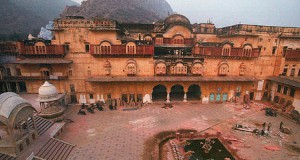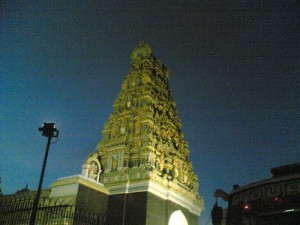Tourist Attraction Of CHURU
Churu is a town that is a located in the desert regions of the state of Rajasthan in the district of Churu. The town is situated in the Thar Desert and one can see shifting sands near the town. The town of Churu is famous for its many buildings, especially the havelis that are built in a grand scale and have an exquisite architecture. Many such buildings can be found in an around the town and these are fascinating places to visit. These havelis are decorated with colorful frescoes and murals. The havelis are the signature of the town. Some of the most renowned buildings are the Surana Haveli, Kanhhaiya Lal Bagla ki Haveli and a few others. These buildings are characterized by small windows that number in the hundreds.
The town also has a fort called the Chur and this is another tourist site in the place. There are many temples and religious sites that can be found all around the town and some of the main ones are Ganesh Temple, Balaji Babosa Temple, Marda Satil Mandir, Salasar Balaji, Dargah of Hajarat Sabir Churu and many others. Jeen Mata and the Sivji Mandir are found near the Kalera Bass Forest.
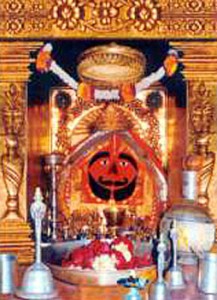
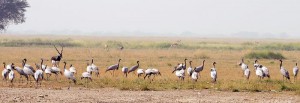
The most spectacular migratory seen from here is that of harriers. These birds pass through this area during the month of September in distinct groups of male, female and immature. Montague's and marsh harrier are more common, while pale harrier and hen harrier are found in lesser numbers.Blue cheeked bee-eaters and green bee-eaters are commonly found, for this is their breeding place. The black ibis is frequently seen here. The most typical phenomenon is that of the demoiselle cranes which arrive in the first week of the September and stay till March.
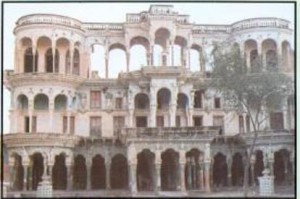
Kothari & Surana Haveli :- A group of handsome painted havelis built by two prominent Oswal Jain merchant families, the Kothari and Surana clans. Amongst them are 'Malji Ka Kamra' (Malji's Haveli), an exotic stucco extravagaza built by Malaji Kothari around 1925 and the massive Surana Double Haveli, said to boast 1111 windows and doors built in the 1870s.
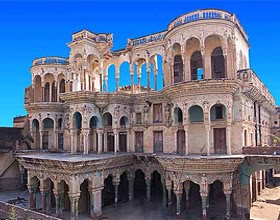
Sethani Ka Johda :- Around 3 km west by the Ratangarh road, a beautiful reservoir built by Bhagwan Das Bagla's widow as a relief project during the terrible 'Chhapan Akaal', the Famine of 1956 V. Samvat (1899AD). The water attracts birds and mammals such as 'Nilgai' (blue bull – a large antelope)

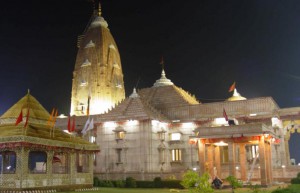
Not finding a suitable cot here, they improvised a bedstead with tree branches and wild grass. They were blessed by the Guru for their service and devotion. Near the Guru`s camp there stood an old jand tree through which had sprouted a pipal. The Guru remarked that as the pipal tree overgrew the rough, thorny Jand, the Khalsa would prosper. At present only the old pipal tree stands. It was probably during his stay here that the Guru visited Bhadra.
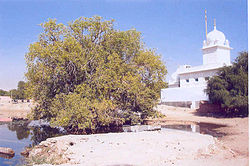
Lord Venkateshwara Temple – Sujangarh :- Lord Shree Vishnu Bhagwan is also referred to as "Lord Venkateshwara" in South Indian Scriptures. The Devotees Experience Divine Fulfillment through Lord Venkateshwara's Darshan.In North India, there is no Venkateshwar temple except here in Sujangarh. Lord Venkateshwar is worshiped in South India by all. Shri Tirupati Balaji is known by the name of Venkateshwar. People from throughout the country visit the temple of Triupati Balaji. With Deep Devotion, the Magnificent Temple of Lord Venkateshwara was built in 1994 by prominent industrialist Late Shri Sohanlalji Jajodia and his family. Master builders and craftsmen from South India were engaged to create an authentic replica of the Tirupati Balaji temple. Vigraha of Lord Balaji, Devi Padmavati and Devi Godamaji was gifted by Tirumala Tirupati Devasthanam.
The principal deity of the temple is of Lord Venkateshwar. By his side is the statue of Shri Vishnu and on either side Bhudevi and Laxmi. These deities are worshiped in the South Indian tradition. At one side of the temple is Padmawati while on the other side is Godadevi. In this temple, the priest, the other servers and various post holders are all South Indian Brahmins. In the sacred inner temple, the idol of Lord Venkateshwar in black stone stands. On one side is Bhudevi while on the other side is Laxmiji. Between the two is the idol of Shri Vishnu.
Darshan of Lord Venkateshwara is open to everyone, throughout the Year. The annual five day celebrations of BRAHMOTSAV festival (commencing Basant Panchmi), attract large numbers of devotees from all parts of India. For people from North India & other parts this "Temple of Lord Venkateshwara" has become a sacred pilgrimage centre. As per the scriptures it is believed that in Kalyug one can attain bliss (MUKTI) by worshipping Lord Shree Venkateswara. Pavitra Utsav ( MAHA VISHNU YAGYA) is also performed annually, ten days after Diwali. Dasera is celebrated as Lord Balaji's birthday.

